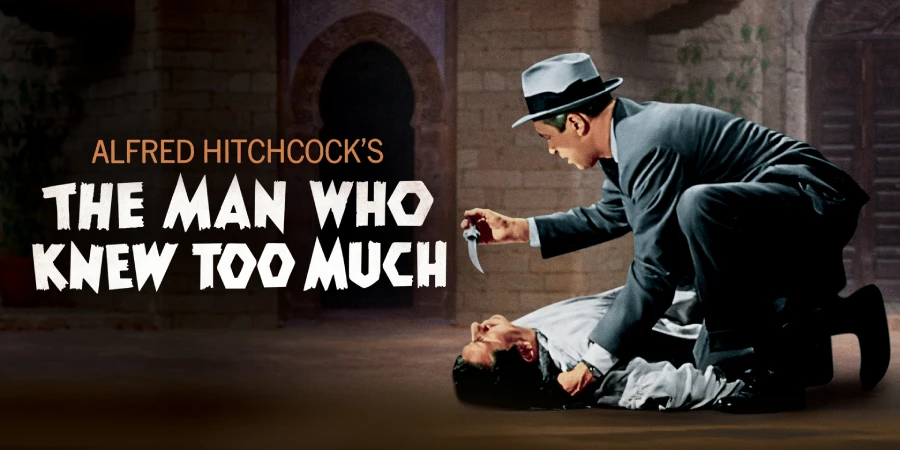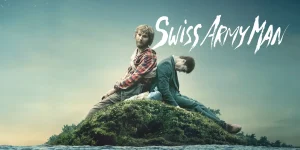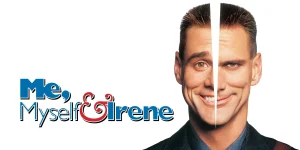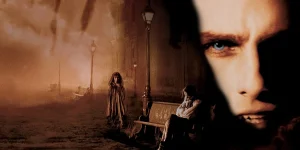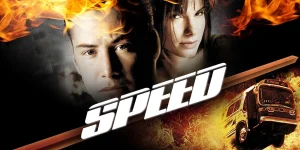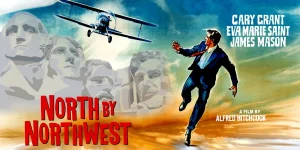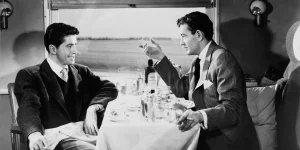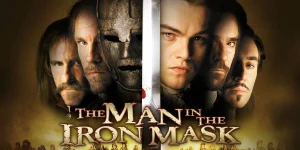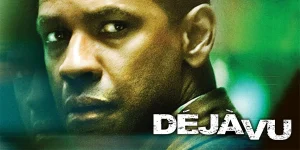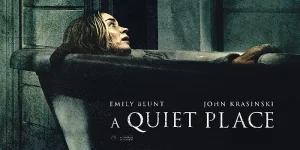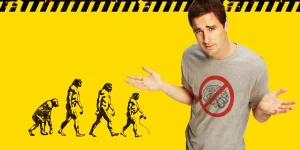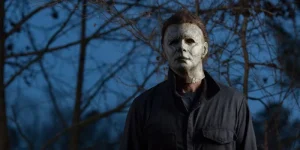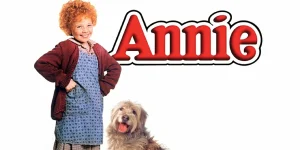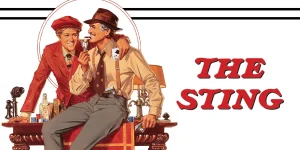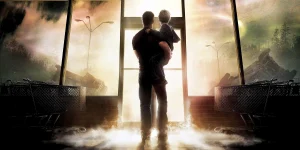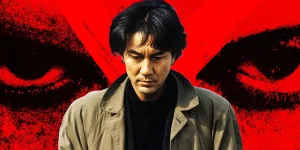Alfred Hitchcock’s The Man Who Knew Too Much (1956) is a masterclass in suspense, blending international espionage with intimate family drama. A remake of Hitchcock’s own 1934 film, this version stars James Stewart and Doris Day, and features one of the most memorable uses of music in thriller cinema history.
Table of Contents
ToggleDetailed Summary
The McKennas in Marrakesh
Dr. Ben McKenna (James Stewart), his wife Jo (Doris Day), a former singer, and their young son Hank are enjoying a vacation in Morocco. While on a bus to Marrakesh, they meet a friendly Frenchman named Louis Bernard. Though charming, Bernard seems a bit too interested in them. Later that night at dinner, Bernard appears in disguise and is subsequently murdered in the marketplace, dying in Ben’s arms.
Before dying, Bernard whispers a cryptic message: “A man is to be killed. He will be assassinated in London… at Albert Hall.”
The Kidnapping
Soon after, the McKennas discover that their son Hank has been kidnapped by those involved in the assassination plot. They are told to remain silent or risk his life. This escalates the stakes beyond political intrigue—it becomes deeply personal.
Ben and Jo fly to London, determined to find Hank and stop the murder Bernard warned them about. The couple navigates foreign embassies, confronts red tape, and deals with evasive authorities, all while chasing down clues.
The Albert Hall Sequence
This is perhaps the film’s most famous sequence and a masterstroke of visual storytelling. The would-be assassination is set to occur during a symphonic performance at London’s Royal Albert Hall. Hitchcock uses the music’s rising tension (Arthur Benjamin’s Storm Clouds Cantata) to synchronize with Jo’s realization that the gunshot will be masked by the music’s climactic cymbal crash.
Jo sees the assassin in a private box above the stage and screams just as he prepares to fire, deflecting his aim and saving the foreign dignitary’s life.
Movie Ending
Following the failed assassination, the McKennas are informed that their son is likely being held at the foreign embassy involved in the plot. But the embassy is diplomatically protected—no direct police action is allowed.
Ben takes matters into his own hands and sneaks into the embassy by climbing up the building. He discovers Hank locked in a room and tries to reach him. Meanwhile, Jo is invited to the embassy under the guise of attending a diplomatic reception. In a powerful moment, she uses her singing to let Hank know his parents are nearby. She sings “Que Sera, Sera”—the song that had comforted Hank earlier in the film. He hears her and whistles in response.
Ben locates Hank just as the conspirators realize what’s happening. A fight ensues. In the chaos, the would-be assassin falls to his death, and Hank is rescued.
The film closes on a lighter note: the McKennas return to their hotel and Jo jokes to their friends, “Sorry we’re late. We had to go pick up Hank.” It’s a Hitchcockian blend of tension, release, and dry wit.
Are There Post-Credits Scenes?
No, The Man Who Knew Too Much (1956) does not have a post-credits scene. Like most films from the era, the story concludes before the credits roll, and there’s no tease or continuation after the ending.
Type of Movie
This film is a thriller/mystery with elements of spy fiction, family drama, and suspense. It exemplifies Hitchcock’s mastery of blending everyday characters with extraordinary danger.
Cast
- James Stewart as Dr. Benjamin McKenna
- Doris Day as Jo McKenna
- Brenda De Banzie as Lucy Drayton
- Bernard Miles as Edward Drayton
- Daniel Gélin as Louis Bernard
- Christopher Olsen as Hank McKenna
- Alan Mowbray as Val Parnell
Film Music and Composer
- Composer: Bernard Herrmann (uncredited as conductor in the film)
- Notable Song: Que Sera, Sera (Whatever Will Be, Will Be) — performed by Doris Day, which won the Academy Award for Best Original Song
- The Storm Clouds Cantata, composed by Arthur Benjamin, is reused from the 1934 original and serves as the orchestral centerpiece of the Albert Hall scene.
Filming Locations
- Marrakesh, Morocco: Used for authentic street and market scenes, lending realism to the exotic opening.
- London, UK: Filming included real locations like Royal Albert Hall, crucial for the film’s climax.
- Los Angeles, California: Interior scenes were shot on soundstages at Paramount Pictures.
The locations serve to enhance the global scope of the story while grounding it in real-world geography.
Awards and Nominations
- Academy Award Winner: Best Original Song (Que Sera, Sera)
- While not heavily awarded, the film has received critical acclaim for its direction, performances, and iconic sequences, especially the Albert Hall scene.
Behind the Scenes Insights
- Hitchcock only remade one of his own films—and this was it. He said he could do it better with the benefit of Hollywood resources.
- Doris Day initially didn’t want to sing in the film, but Hitchcock insisted, leading to the now-iconic inclusion of Que Sera, Sera.
- Bernard Herrmann appears on-screen conducting the orchestra in Albert Hall—rare for a composer.
- Hitchcock makes his cameo at the 25-minute mark—watch the market scene in Morocco.
Inspirations and References
- The 1956 version is a remake of Hitchcock’s 1934 British film of the same name.
- The idea of a family accidentally getting involved in a conspiracy was inspired by classic thriller tropes, and echoes themes of “the wrong man” common in Hitchcock’s work.
- The story loosely draws on the notion of ordinary people caught in the web of international intrigue.
Alternate Endings and Deleted Scenes
- There are no publicly known alternate endings, but some extended dialogue and alternate takes were reportedly trimmed during post-production to maintain a tight pace.
- A longer version of the embassy escape was filmed but not included in the final cut, possibly to avoid dragging out the tension after the Albert Hall climax.
Book Adaptations and Differences
- Not based on a specific novel, though influenced by Hitchcock’s favorite thriller literature and earlier works.
- The script was written by John Michael Hayes, with a new focus on family dynamics and musical motifs compared to the 1934 version, which was more espionage-centric.
Memorable Scenes and Quotes
Key Scenes
- Louis Bernard’s shocking assassination in the marketplace.
- Jo’s dramatic scream timed with the cymbal crash at Albert Hall.
- Jo singing Que Sera, Sera as a coded message to her kidnapped son.
Iconic Quotes
- Jo: “Why would a man hide who he is?”
- Ben: “Let’s just say I’m the man who knew too much… and said too little.”
- Jo (singing): “Que Sera, Sera, whatever will be, will be…”
Easter Eggs and Hidden Details
- Hitchcock’s cameo occurs as he watches acrobats in the Moroccan marketplace.
- Bernard Herrmann’s onscreen conducting is a nod to his contribution to Hitchcock’s overall cinematic identity.
- The storyline subtly parallels Cold War paranoia—trust no one, not even diplomats.
Trivia
- Hitchcock shot the Albert Hall scene without dialogue for nearly 10 minutes—relying entirely on music and visuals.
- Que Sera, Sera became Doris Day’s signature song, even though she initially disliked it.
- James Stewart was not Hitchcock’s first choice; the director initially wanted a younger actor but was overruled by the studio.
Why Watch?
- You want to see Hitchcock at the top of his game.
- You enjoy classic thrillers that combine global espionage with personal stakes.
- You’re interested in how music can be a central narrative device.
- You appreciate strong performances from golden age stars like Stewart and Day.
Director’s Other Movies
- Rear Window (1954)
- Vertigo (1958)
- Psycho (1960)
- North by Northwest (1959)
- Notorious (1946)
- The Birds (1963)
Recommended Films for Fans
- North by Northwest (1959)
- Charade (1963)
- The 39 Steps (1935)
- To Catch a Thief (1955)
- The Spy Who Came in from the Cold (1965)
- The Third Man (1949)

